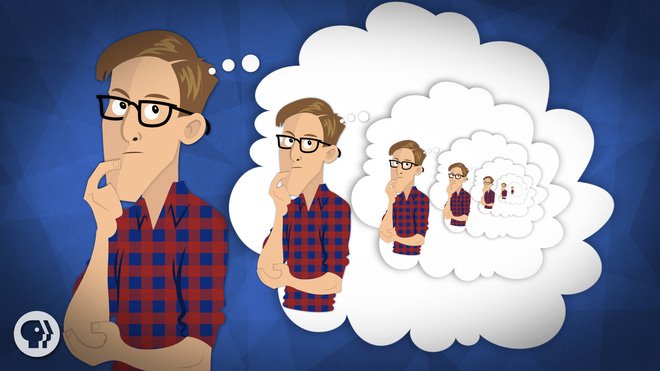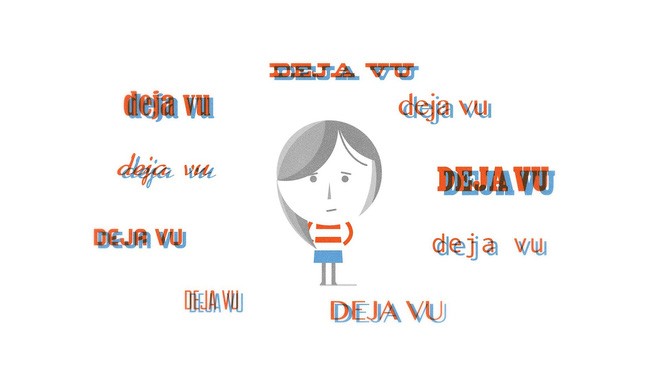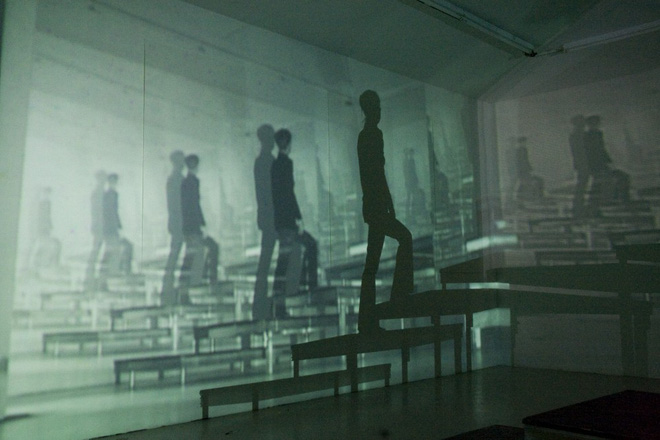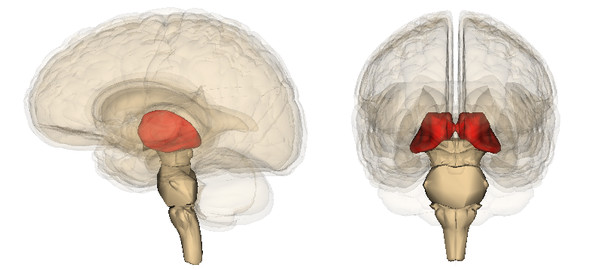League of Déjà vu: The strange feeling when a reality is experienced twice
Have you ever experienced the feeling of stepping into a room, for the first time, thinking that you've been here? Or talk to your friends about the exact same content you said before?
- The man "sees" the future makes medicine "give up"
There are many strange circumstances like that. But the common point in all cases is that you experience completely new feelings and scenes, then suddenly realize that you have experienced them before.
These strange feelings did not last more than 30 seconds, there was a bit of fun and confusion. But don't worry, it's just the Déjà vu phenomenon. You have not been stolen memories or just wandered into a parallel universe. 70% of all the world's population is at least once affected by Déjà vu in life.
 League of Déjà vu: The strange feeling when a reality is experienced twice Picture 1
League of Déjà vu: The strange feeling when a reality is experienced twice Picture 1
70% of all the world's population is at least once affected by Déjà vu in life.
1. What is Déjà vu?
Déjà Vu is a French word meaning "once seen". It also has many variations: Deja vecu - once experienced, Deja Senti - once thought of, Deja Visite - once visited.
In 1876, the French psychiatrist Emile Boira, one of the first to notice this phenomenon, chose the name Déjà Vu to describe in his document. However, it took more than a century for scientists to agree on a universal definition of the Déjà Vu phenomenon.
It was in 1979 that Dr. Vernon Neppe, the famous American neurologist, described Déjà Vu as "regardless of a very familiar subjective impression of an ongoing reality with an unknown past." clearly " .
This scientific definition applies to all Déjà Vu phenomena, both in life and medicine, such as patients with symptoms of epilepsy or schizophrenia who also experience Déjà Vu.
However, to understand simply in everyday life, Déjà Vu is that you feel that an object is very familiar to every detail, although it is clear that you contact that object for the first time.
2. Why does it happen?
Déjà Vu is a sudden occurrence, so you cannot force yourself or others into Déjà Vu. That is one reason why research to explain the Déjà Vu phenomenon is extremely difficult.
Until now, no scientist dared to claim 100% that he explained the exact mechanism of Déjà Vu. However, let us take a look at some scientific hypotheses of this phenomenon:
Divided Attention (The Cellphone Theory)
 League of Déjà vu: The strange feeling when a reality is experienced twice Picture 2
League of Déjà vu: The strange feeling when a reality is experienced twice Picture 2
In 2008, in one of his studies, Dr. Alan Brown, currently working at Columbia University, tried to reproduce a similar experience as Déjà vu.
He and his colleague put a group of students in front of a presentation screen, allowing them to glance at a series of images at extremely short speeds - from 10-20 milliseconds. This is enough time for the brain to receive images, but not long enough for students to build awareness about them.
Next, a group of students was shown a different set of images that mixed the previously viewed and unseen images. As a result, the projected images are all more familiar to candidates. In another experiment, when images were replaced by words, similar results were noted.
Based on this research, Dr. Brown proposed a hypothesis called Divided Attention. Accordingly, when we are not focused, the information about the experience around us can still be collected and then entered into the subconscious. Then, when we begin to focus again, this information is gradually perceived again. So they become familiar with us.
For example, when you enter a room for the first time and experience Déjà vu. Before officially focusing on observing the room, the brain unconsciously dealt with hearing and visual information. Therefore, when we start to calm down and pay attention to the room, we feel like we used to be there even though we can't remember exactly when.
Full-image hypothesis (Hologram)
 League of Déjà vu: The strange feeling when a reality is experienced twice Picture 3
League of Déjà vu: The strange feeling when a reality is experienced twice Picture 3
The Dutch psychiatrist, Hermon Sno, once proposed the idea of a hypothesis called a whole picture. He thinks that we can reproduce three-dimensional space from any one of them.
Thanks to that, Hermon Sno explained that Déjà vu is the fact that you reunite a single thing, coinciding with what was before, but the brain recreates the whole sense of familiarity about the whole scene.
Any feature of the environment (image, sound, flavor) familiar with a certain experience has the ability to make people remember all of them clearly.
Some other researchers agree with the idea that just a small familiar feeling activates Déjà vu.
For example, when you suddenly feel your conversation is extremely familiar. That's because your friend said exactly one sentence that was said before. Just in the previous experience, you didn't notice and didn't remember the sentence.
The saying elicits all the familiar feelings back, you live in the old setting and so you have 30 seconds of Déjà vu.
Hypothesis of processing information at the same time (Dual Processing)
 League of Déjà vu: The strange feeling when a reality is experienced twice Picture 4
League of Déjà vu: The strange feeling when a reality is experienced twice Picture 4
This is also a popular hypothesis to explain the Déjà vu phenomenon, introduced by Dr. Robert Efron in 1936. At that time, he was working at the Boston Veterans Hospital.
Robert Efron suggested that a delay in information processing of the brain created Déjà vu. Accordingly, information enters the brain and goes through many different paths. If the process of downloading this information synchronizes between routes, we will get normal awareness.
On the path of that information, Dr. Efron found a part in the left brain responsible for sorting information, and this process had delays of one million million seconds. This delay occurs during processing and occurs again when information is transferred to the right brain.
If this delay is longer than normal, the brain can classify these new information as memories. That means the brain is fooled for a moment, that an ongoing event has happened before. But because it's just a feeling of being fooled, it won't be able to retrieve it back to that time in the past.
Suppose when you stand in front of a scene, visuals collect ABC facts. These three facts are divided by 2 processing paths, one through the left brain and the right brain to classify. In this path they have been received: ABC.
But at the same time another path of treatment through the visual cortex is lost. It will say that you are seeing data AB .- C.
Data AB is synchronized but the interruption in C gives you the feeling of Déjà vu.
3. Do you want to once again experience Déjà vu?
As I said, Déjà vu will come to you suddenly, but we cannot create the feeling of Déjà vu. Therefore, if you want to experience Déjà vu again, the only way is to wait.
Here are some conclusions drawn from the surveys and studies of Déjà vu. It may be helpful if you want to "wait" Déjà vu more actively:
- On average, an average person experiences Déjà vu only once a year
- Déjà vu often appears in a state of stress or extreme fatigue
- People began to meet Déjà vu from 8-9 years old, the greater the less they met
- Déjà often happens with indoor scenes
- Educated people, good economic conditions and traveling often experience Déjà vu more
You should read it
- The man 'sees' the future makes medicine 'bundle'
- The new hypothesis about Snowball Earth and how the earth freezes hundreds of millions of years ago
- Startled with the hypotheses about the number of universes co-existed by scientists
- Setting up Photoshop Action batch image processing
- How to Open a Djvu File
- What is left of the Earth after 100 nuclear warheads are detonated at the same time?
- How to Open Djvu Files
- When it comes to rain, running or walking is the least wet?
- Discover 'extreme' image processing on Google+
- What bad thing will happen if the Sun suddenly disappears?
- Should photographed RAW mode or not?
- Image processing algorithms can fix corrupted images, improve low quality images
May be interested

Listed the 10 most notorious pirates in history

Top 10 most beautiful castles in the world

List of the world's best 10 handguns

What do you know about platinum - Platinum, one of the most rare metals on the planet?

7 inventions from ancient times are still widely used to this day

10 most dangerous prehistoric carnivorous dinosaurs






 Experience with 5 applications for virtual reality glasses
Experience with 5 applications for virtual reality glasses League of Legends: Top 4 useful but neglected equipment in the game
League of Legends: Top 4 useful but neglected equipment in the game 14 human sensations can be experienced in 10 seconds before dying
14 human sensations can be experienced in 10 seconds before dying Instructions to play Dream League Soccer 2022 with friends
Instructions to play Dream League Soccer 2022 with friends What is Mixed Reality (MR)? How is MR used?
What is Mixed Reality (MR)? How is MR used? Review: The Binding of Isaac Afterbirth + - The feeling of trying hard has never been so good
Review: The Binding of Isaac Afterbirth + - The feeling of trying hard has never been so good